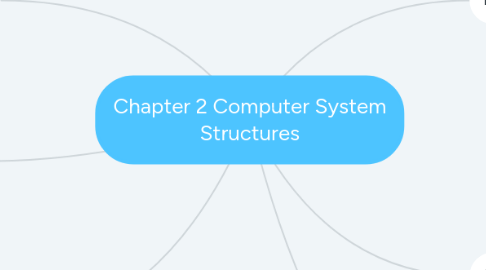Chapter 2 Computer System Structures
저자: LIM HONG SHEN

1. Asynchronous I/O Structure
1.1. CPU can do other thing -> can fully utilize
1.2. can return the control to the user while processing
2. Dual-Mode Operation
2.1. User Mode
2.2. Kernel Mode
3. Memory Protection
3.1. Interrupt vector & interrupt service routines must have memory protection
3.2. Base register - Holds smallest legal physical memory address
3.3. Limit register - contain the size of the range
4. Interrupt Handling
4.1. 1. CPU interrupted -> stop what it's doing -> transfer execution to interrupt vector table
4.2. 2. interrupt vector provide address of interrupt service routine for interrupting device
4.3. 3. separate segments -> determine what action should be taken for the interrupt
4.4. 4. OS save the state of CPU ->saved return address is loaded into program counter
4.5. 5. interrupt already serviced -> saved return address is loaded into program counter
4.6. 6. interrupted computation resumes
5. Synchronous I/O Structure
5.1. CPU do nothing when instruction running
5.2. only allow 1 instruction run at the time
6. CPU Protection
6.1. Timer - when timer reaches value 0, interrupt occurs
6.2. To prevent CPU from getting stuck in infinite loops


